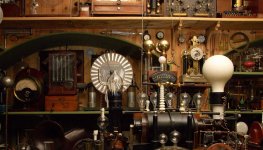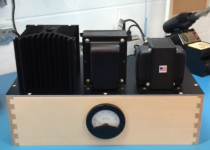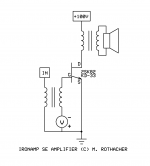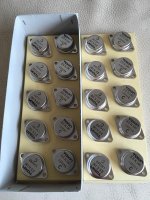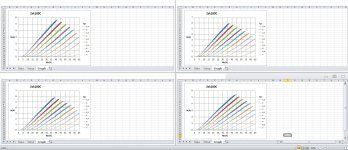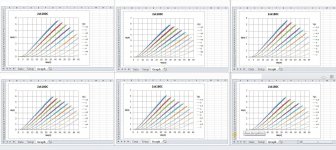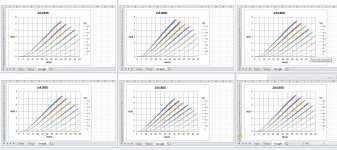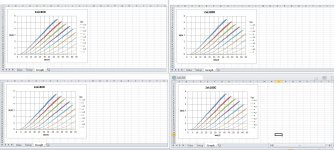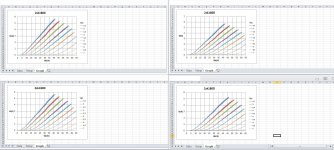I hope I can get something done in time. But, time has a way of going much faster than I plan,
Just wanted to mention that coming up with a design isn't so bad, it's the chassis, and layout, building, and testing, and getting it not to explode that takes time. 🙂
Just wanted to mention that coming up with a design isn't so bad, it's the chassis,
and layout, building, and testing, and getting it not to explode that takes time. 🙂
From Diyer point of view most important is topology and audio nirvana.
Prototypes soldered with point to point technique on wood boards are great !
Final build version with chassis can wait..😀
Greetings
Prototypes soldered with point to point technique on wood boards are great!
It may come to that. 🙂
It may come to that. 🙂
Attachments
Just wanted to mention that coming up with a design isn't so bad,
it's the chassis, and layout, building, and testing, and getting it not to explode that takes time. 🙂
Modest Michael he have ready for show at BAF 2015 the " IronAmp "
🙂 le Magnifique

Attachments
Last edited:
That's a good idea. They're on loan right now, but I could probably get them back for BAF. They'll require some odd boxing-up 🙂
They'll require some odd boxing-up 🙂
Mechanic vibrations isolation / absorption feets ?
Modest Michael he have ready for show at BAF 2015 the " IronAmp "
🙂 le Magnifique
Where (or how) can I get the schematic of iron amp? I saw the youtube video but would like to have a printed version like the published power and bias supply schematics on Michael's website. I have an extra pair of sony 2SK82 vfets to use in this project. Sorry if this was already asked and replied before.
2SK180 Grade C
Got this box of "Grade C" 2SK180 from Japan through an auction, at a pretty cheap price, all are curve traced to be good (unlike those I came across before with serial number 1Y... and 1Z...), and now I have enough parts to try a few things without worrying about busting some of them while trying 🙂.
One question though - does anyone know what this "Grade C" mean? (there are also some Grade D around, as well as those without grades, but I don't really know what that means.)
And please don't ask me where I got them, I don't want to repeat the mistake I made at the VFET2 thread 😱 ... and they're not hard to find through the Internet search engines.
Got this box of "Grade C" 2SK180 from Japan through an auction, at a pretty cheap price, all are curve traced to be good (unlike those I came across before with serial number 1Y... and 1Z...), and now I have enough parts to try a few things without worrying about busting some of them while trying 🙂.
One question though - does anyone know what this "Grade C" mean? (there are also some Grade D around, as well as those without grades, but I don't really know what that means.)
And please don't ask me where I got them, I don't want to repeat the mistake I made at the VFET2 thread 😱 ... and they're not hard to find through the Internet search engines.
Attachments
Thanks ZM.
Jama gave me some idea through PM, but indeed ilimzn is a SIT expert so I'll drop him a PM and ask also.
Jama gave me some idea through PM, but indeed ilimzn is a SIT expert so I'll drop him a PM and ask also.
I have a number of Tokin documents and there is no formal mention of a grade in either of them. However, based on the other Tokin parts, i would say this is a mixed grading of the pinch-off and mu. Most SIT manufacturers had something like this but not necesairly officially documented - having different grades to compare on a curve tracer would help here. The fact that the C is different than the rest of the standard Tokin script on these parts also suggests a post production selection process, which may well have been ordered by their original end user, most probably for easy paralleling. If so, it may ultimately be impossible to discover what the grades mean except by measuring and comparing.
Sadly I do not have a 2SK180 at my disposal, only 181, 2 and 3 - at least not one marked as such. I do have some suspicions about a pair of supposed 2SK77 that may well be re-marked 2SK180. None of them have any other markings except Tokin standard as per datasheet.
Sorry I could not help you more with this.
I can however offer some advice on using the Tokin 18x series. They are designed for high voltages and in fact this is where they are most linear, and most consistent with their parameters - at some 100V Vds and over. I know this is not exactly usable in simple amps unless you have an output transformer, and even then driving the large input capacitance is no easy thing. For low voltages they show a LOT of variance.
Sadly I do not have a 2SK180 at my disposal, only 181, 2 and 3 - at least not one marked as such. I do have some suspicions about a pair of supposed 2SK77 that may well be re-marked 2SK180. None of them have any other markings except Tokin standard as per datasheet.
Sorry I could not help you more with this.
I can however offer some advice on using the Tokin 18x series. They are designed for high voltages and in fact this is where they are most linear, and most consistent with their parameters - at some 100V Vds and over. I know this is not exactly usable in simple amps unless you have an output transformer, and even then driving the large input capacitance is no easy thing. For low voltages they show a LOT of variance.
TOKIN 180C and D
Hi all. I do not know if this post help but I have measure a lot of 2sk180C and D types and looking curves I only see that variance is lower in D types. But selecting only with curves (I do not know if there are other electrical differences) I think that will be possible match between types. Attached are 180C type curves I measured
Hi all. I do not know if this post help but I have measure a lot of 2sk180C and D types and looking curves I only see that variance is lower in D types. But selecting only with curves (I do not know if there are other electrical differences) I think that will be possible match between types. Attached are 180C type curves I measured
Attachments
And D type
And here all D type I measured. All curves are a lot similar. It was possible do pairs matched.
When I measured THF51S, I got a lot of variance, and it was more difficult got matched pair (possible if you have a lot of devices).
And here all D type I measured. All curves are a lot similar. It was possible do pairs matched.
When I measured THF51S, I got a lot of variance, and it was more difficult got matched pair (possible if you have a lot of devices).
Attachments
- Status
- Not open for further replies.
- Home
- Amplifiers
- Pass Labs
- Live Lab Hangout #1.1 Posted
